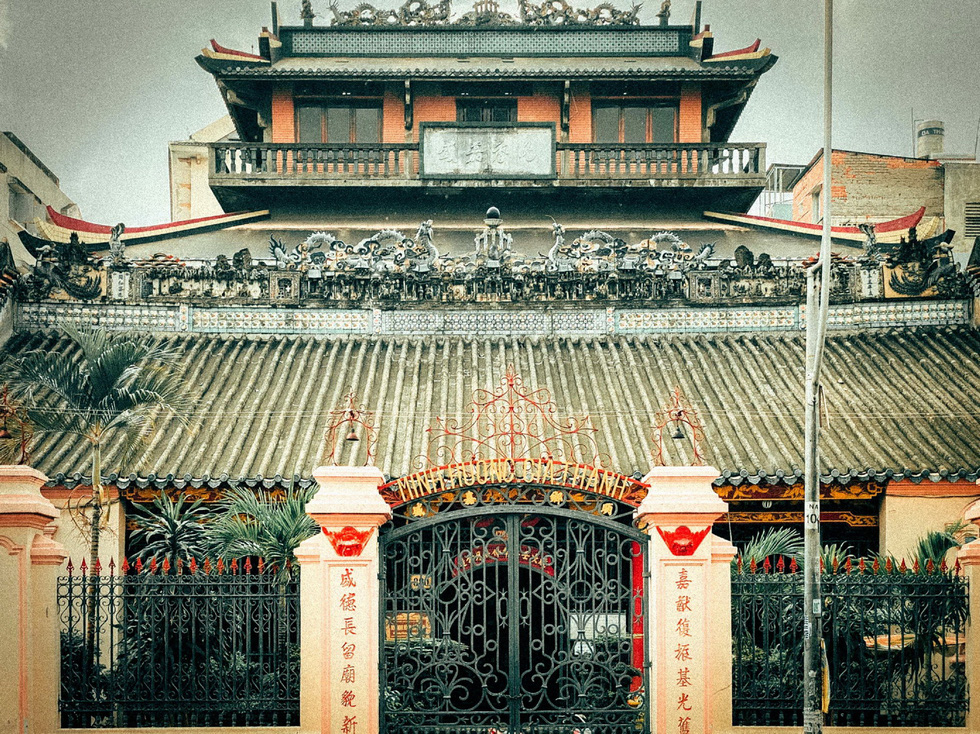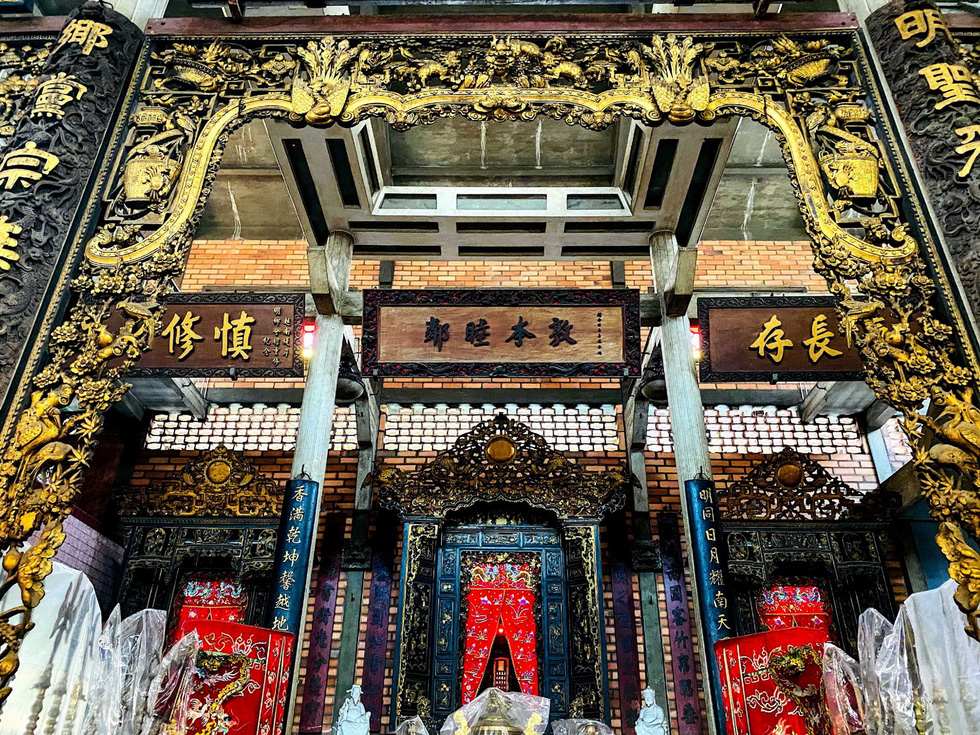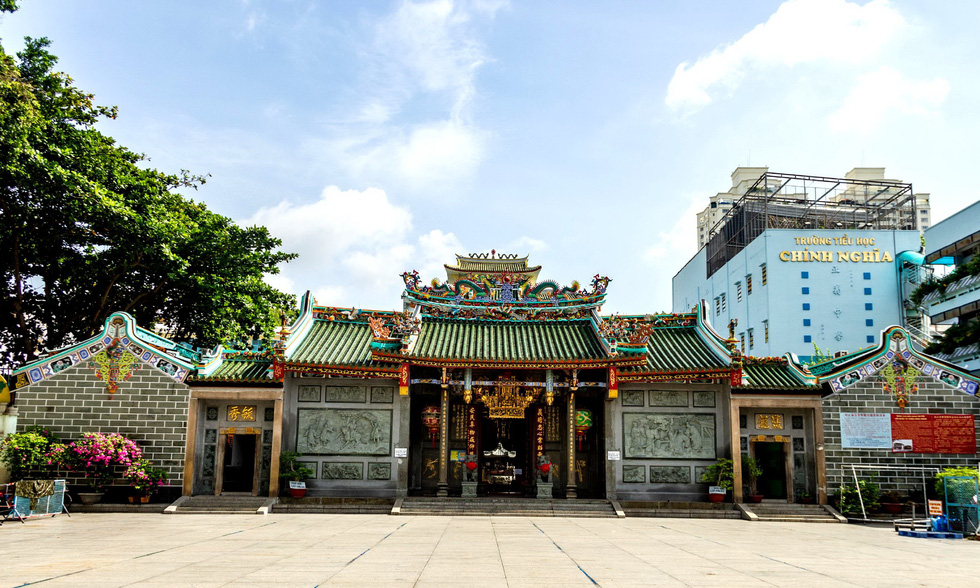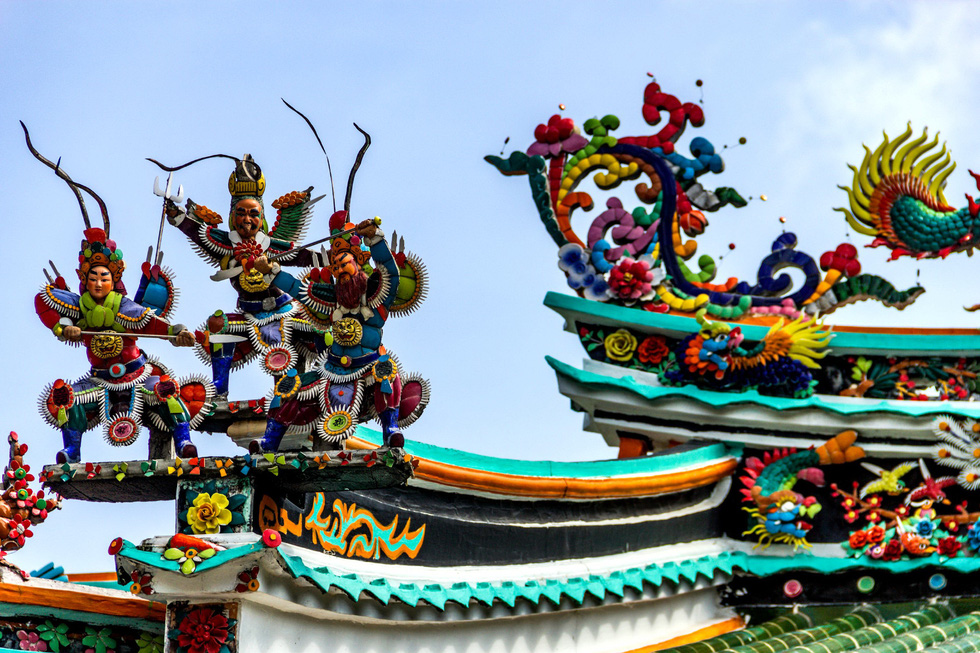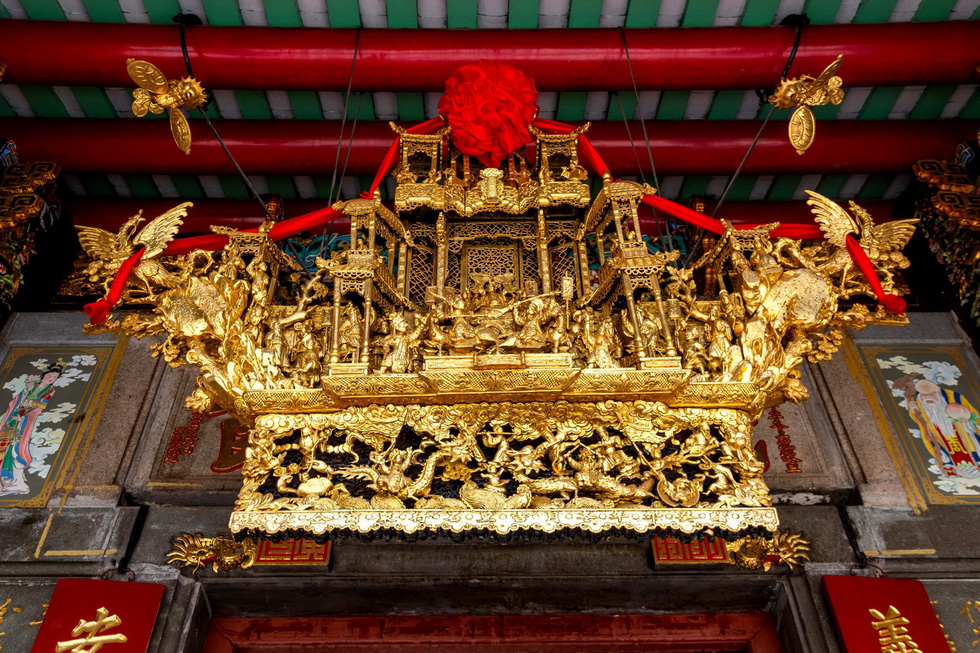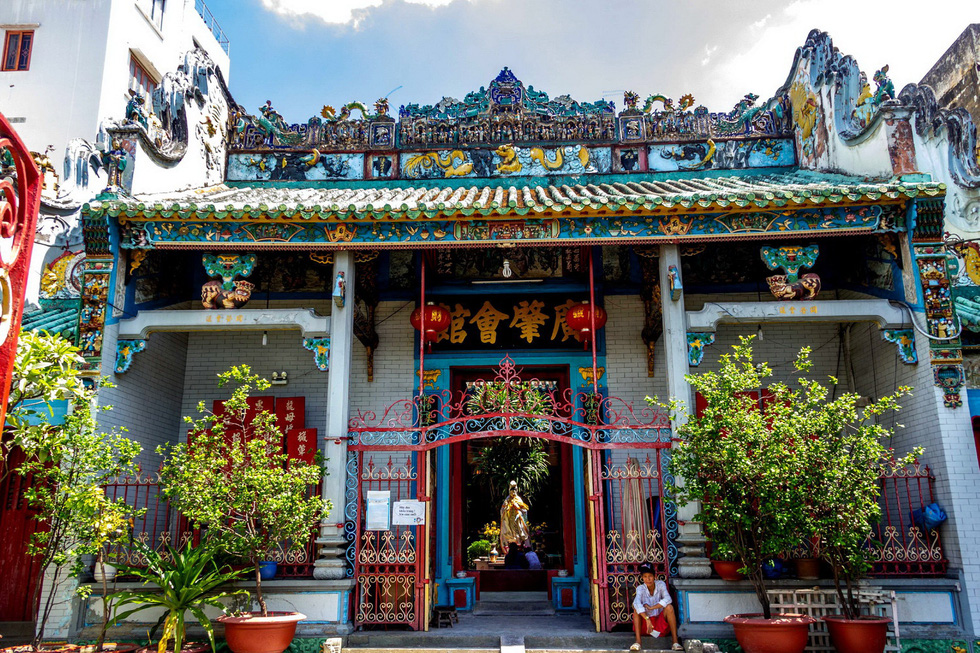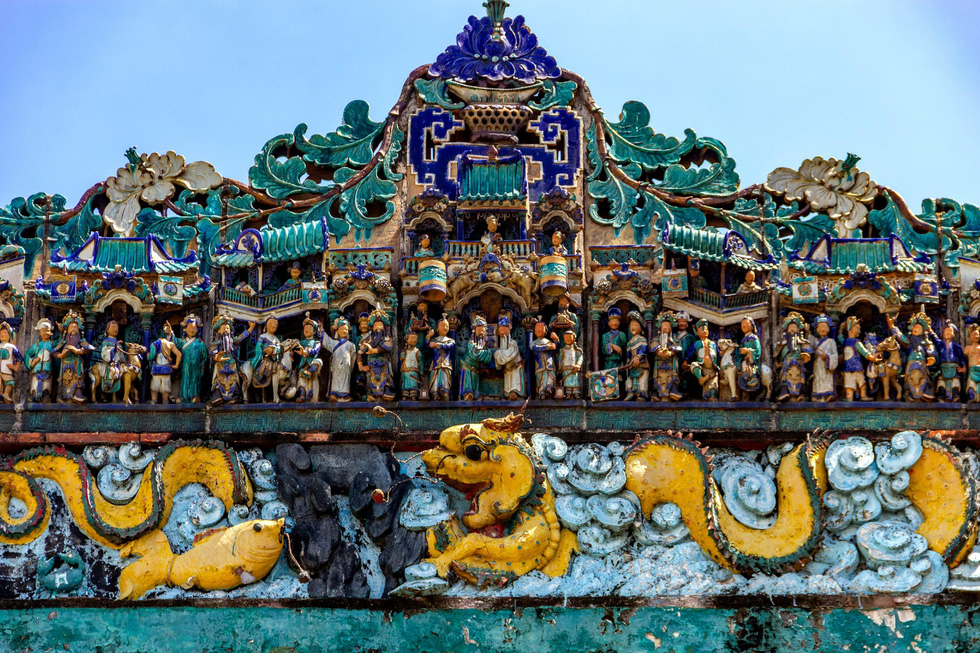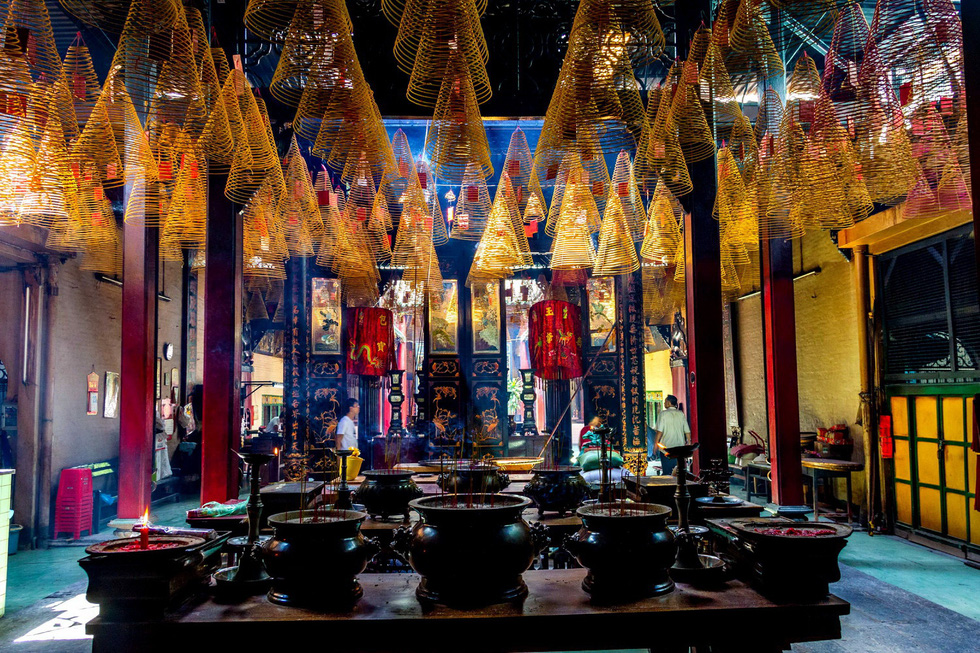Ho Chi Minh City’s District 1 and District 5 are home to the city’s vibrant Chinese-Vietnamese community, boasting several guildhalls which form a unique and charming area of attractions for tourists visiting the southern metropolis.
The Chinese-Vietnamese population has been present in the two districts for generations.
District 5 and neighboring areas in District 6 and District 11 are collectively known as Cho Lon — home to the largest community of Chinese Vietnamese in the southern metropolis.
Despite having settled down many years ago, people of Chinese descent living in the southern metropolis attach great importance to preserving their traditions, culture, and religious beliefs.
Part of upholding such traditions has meant building several guildhalls to serve the needs of the local community.
These guildhalls serve commercial, social, and spiritual functions, acting as business associations, philanthropic organizations, meeting spaces, and halls of worship.
|
|
| The main hall for worship at Minh Huong Gia Thanh guildhall in District 5, Ho Chi Minh City is seen in this undated file photo. Photo: Tuoi Tre |
Minh Huong Gia Thanh guildhall
Minh Huong Gia Thanh guildhall, also known as Minh Huong communal house, founded by China’s Ming dynasty loyalists in 1789, was the first Chinese guildhall built in Ho Chi Minh City’s so-called China Town.
The guildhall is located at 380 Tran Hung Dao Street, Ward 11, in District 5.
Minh Huong is literally translated as Ming People’s Village, while Gia Thanh was given by King Gia Long of Vietnam’s Nguyen dynasty.
Minh Huong communal house was built in the style of Cantonese architecture, with brick walls and a tile roof.
The roof is decorated with a relief of two dragons fighting for a pearl and other reliefs of ceramic statues designed in the style of the famous Dong Hoa - Cay Mai pottery in southern Vietnam in 1901.
Each of the ceramic statues represents a character or the whole story of an ancient Chinese tale.
|
|
| The hall for displaying horizontal lacquered boards at Minh Huong Gia Thanh guildhall in District 5, Ho Chi Minh City is seen in this undated file photo. Photo: Tuoi Tre |
Unlike the popular architecture of other Chinese guildhalls in Ho Chi Minh City, which usually include halls in the front, in the center and in the back, Minh Huong consists of a place for displaying horizontal lacquered boards, a main hall for worship, and a reception area.
The most notable horizontal lacquered board at the communal house is likely the one granted by King Tu Duc of the Nguyen dynasty in 1863.
In addition, the guildhall also preserves 25 other horizontal lacquered boards and 29 pairs of wood panels.
Minh Huong Gia Thanh was recognized as a national architectural and artistic relic in 1993.
Nghia An guildhall
Nghia An guildhall, located at 678 Nguyen Trai Street in District 5, dates back to the 19th century and was built by people from Chaozhou City in the Chinese province of Guangdong.
The guildhall derives its name from a very old term for Chaozhou, one that dates back to the 5th century.
As with several of the other Chinese guildhalls in Ho Chi Minh City’s District 1 and District 5, Nghia An has a rectangular architecture with perpendicular halls.
|
|
| Nghia An guildhall in District 5, Ho Chi Minh City is seen in this undated file photo. Photo: Tuoi Tre |
The architecture, interior, and exterior of the guildhall clearly characterizes those of Chaozhou.
The roof is divided into three parts, with the middle being higher than the two sides.
A crockery statue of two dragons fighting for a pearl sits atop the roof.
|
|
| Statues are placed atop the roof of Nghia An guildhall in District 5, Ho Chi Minh City is seen in this undated file photo. Photo: Tuoi Tre |
The guildhall includes a lobby, a courtyard, a hall for incense ceremonies, a main hall, and offices lining its sides.
It is famous for its gorgeous woodcarvings and is dedicated to Guan Yu, not only a god of war but also trade and commerce.
In 1993, Nghia An was recognized by the Ministry of Culture as a national architectural and artistic relic.
|
|
| A special art form is placed atop the door of Nghia An guildhall in District 5, Ho Chi Minh City in this undated file photo. Photo: Tuoi Tre |
Quang Trieu guildhall (Thien Hau Temple)
Located at 122 Vo Van Kiet Street in Nguyen Thai Binh Ward, District 1, Quang Trieu guildhall was once a meeting space, a place to manage Chinese immigrants from Guangzhou and Zhaoqing Cities in Guangdong, and a place of worship for Thien Hau Thanh Mau (the Empress of Heaven) – a Chinese goddess of the sea and protector of seafarers and fishermen.
The guildhall is thus also known as Thien Hau Temple, which characterizes Guangdong’s architecture, featuring mini statues and patterns that depict the classic tales of China.
|
|
| Quang Trieu guildhall in District 1, Ho Chi Minh City is seen in this undated file photo. Photo: Tuoi Tre |
Particularly, the relief on the guildhall’s courtyard was made from a famous type of Chinese sculpture technique using chisels and wooden hammers to carve figures and scenes on bricks to decorate the interior and exterior.
Another relief hung above the entrance to the guildhall was made of intricately carved wood, symbolizing the boats saved by Thien Hau Thanh Mau.
|
|
| Statues depicting an ancient Chinese tale are placed atop the roof of Quang Trieu guildhall in District 1, Ho Chi Minh City in this undated file photo. Photo: Tuoi Tre |
An altar of Thien Hau Thanh Mau is located in the center of the main hall, while altars of other gods and goddesses are erected on the two sides.
The guildhall has been recognized as a national architectural and artistic monument since 1993.
|
|
| Inside Quang Trieu guildhall in District 1, Ho Chi Minh City in this undated file photo. Photo: Tuoi Tre |
Like us on Facebook or follow us on Twitter to get the latest news about Vietnam!



